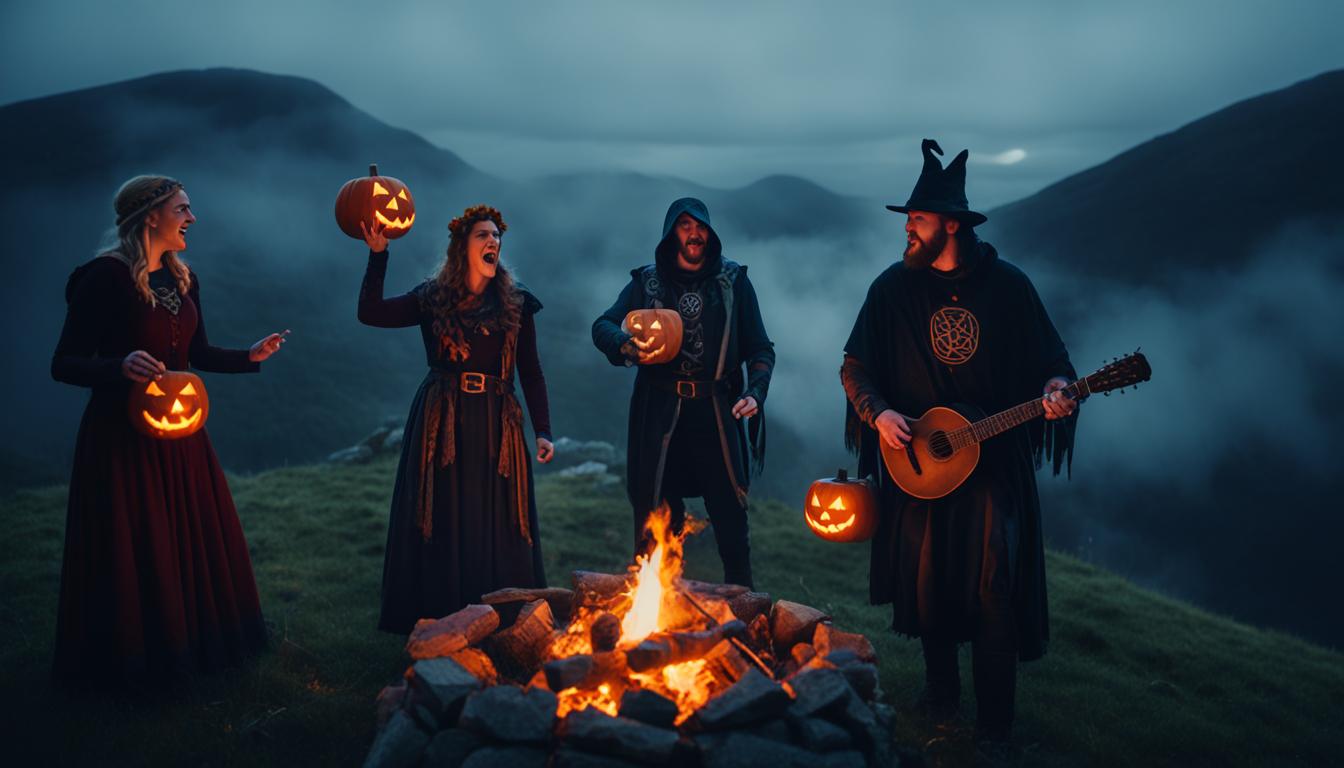Halloween traditions have been around for many years. But, not many know the deep history behind trick-or-treating. This custom, now key to Halloween, comes from ancient Celtic festivals and medieval times.
The Samhain origin of Halloween goes back to before Christianity. The Celts used to mark the end of harvest and the start of winter with it. They thought the veil between the living and dead got thin, letting spirits pass through.
When Christianity came, it mixed with these Celtic festivals. This created a mix of traditions that shaped today’s Halloween. People used to dress up to avoid evil spirits, which is where trick-or-treating started.
Key Takeaways
- Trick-or-treating comes from ancient Celtic festivals
- Samhain was the Celtic New Year and harvest end
- Costumes were worn to protect against spirits
- Medieval times influenced modern Halloween
- Christianity mixed pagan and religious customs
The Ancient Origins of Halloween and Trick-or-Treating
Halloween has its roots in ancient pagan rituals. The Celts celebrated Samhain, marking the end of harvest and the start of winter. They believed the veil between worlds thinned, letting spirits roam free. To ward off these spirits, they lit bonfires and wore costumes.

As Christianity spread, it met these pagan traditions. The church started blending old customs with new religious practices. In the 9th century, All Saints’ Day on November 1 and All Souls’ Day on November 2 were established.
This led to a three-day period called Allhallowtide. It mixed Samhain elements with honoring saints and praying for the dead. The eve of All Saints’ Day became known as All Hallows’ Eve, later shortened to Halloween.
In England, a practice called “souling” began. Poor people visited rich homes, praying for the dead in exchange for soul cakes. Over time, children took up this practice, asking for various treats. This early trick-or-treating laid the groundwork for today’s Halloween traditions.
Trick-or-Treating’s Medieval Roots
In Scotland and Ireland, young people dressed up and went from door to door. They performed for treats instead of saying prayers. They sang, told jokes, or recited poems to get fruits, nuts, or coins.
This tradition started in the 16th century. It laid the groundwork for today’s Halloween celebrations.
Soul cakes were another part of medieval trick-or-treating. In Britain, Flanders, and German-speaking areas, people went door-to-door on Halloween. They sang for soul cakes, blending religious and community traditions.
This custom helped shape today’s trick-or-treating.
Mumming was another way people celebrated. They dressed as ghosts and demons, performing for food and drinks. This tradition likely influenced our modern Halloween celebrations.
Today, we still see the impact of these ancient customs in our Halloween traditions.
Evolution of Trick-or-Treating in North America
Trick-or-treating in North America has a long history. The first recorded Halloween guising was in Kingston, Ontario, Canada in 1911. Newspapers in Canada started using “trick or treat” in the early 1920s. This marked the start of this popular tradition.
American Halloween customs became more popular with Irish immigrants in the 1840s during the Potato Famine. By the 1920s, Halloween was all about pranks and fun. To stop too many pranks, communities started organized trick-or-treating in the 1930s as a safer option.
World War II briefly stopped this tradition because of sugar rationing. After the war, trick-or-treating came back strong. Candy companies saw this as a chance to advertise Halloween nationwide.
Now, trick-or-treating is a key part of Halloween in North America. It has changed from a way to prevent pranks to a night of costumes, candy, and community fun. This shows how Halloween traditions in America have changed over time.

Leave a Reply